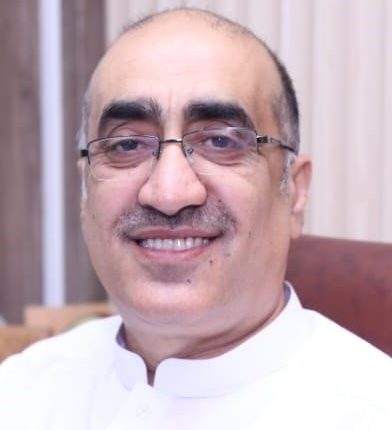The iconic words of Martin Luther King Jr, “I have a dream” echo in my mind and heart once again when I see the devastating figures of renal diseases and foresee the magnitude of disease burden in the coming two decades.
It is very disturbing to state that 17 million patients in Pakistan are suffering from end stage renal disease and in need of dialysis or transplant, draining all the resources of white collar noble families to underprivileged class in months. Due to lack of health education, 60-70 percent of Pakistani aging men present with acute urinary retention due to enlarged prostate, which happens to be only 8 percent in the developed countries.
Renal stone diseases are the number 4th cause of renal failure in the country owing to being inhabitants of the “stone belt” which is contrary to western hemisphere. Bladder cancer, renal cancer and prostatic cancer are standing in top 10 cancers in Pakistan. The rise in invasive cancers in the country, especially Khyber Pakhtunkhwa, is haunting the top minds and bread owners in the median age of 50 years. The human being has been discovered void since 1987, and the tsunami of multidrug resistant UTI is calling and it is no more a dystopian fantasy.
These preventable sufferings are just tip of the iceberg. The current census of Khyber Pakhtunkhwa showed its population as 40,846,097, with a recorded growth rate of 2.4. The healthcare capacity in the province dealing with urological diseases is so lacking that we have less than 200 urologists in KP for its 40 million population. More importantly, there are no urologists in the newly-merged districts. Similarly, Pakistan ranks 114 in specialist-surgical workforce per 100,000 of her population. The influx of 40 percent of patients from Afghanistan has already fractured the existing healthcare system.
The best solution to this problem is community outreach to bridge this disparity of human beings. The establishment of kidney centers in the near border areas like Parachinar of District Kurram will provide breathing space to tertiary care hospitals, such as the Institute of Kidney Diseases (IKD), Hayatabad. It is worth mentioning here that a kidney center in Parachinar was promised by the government a few years back, however, it needs firm steps by provision of infrastructure and other resources to get developed into a full-fledged healthcare facility.
After doing this, such community outreach centers will be involved in clinical care, awareness, research and advocacy programs in preventive medicine. The basic urological care at door step in the near border facilities will also bring interaction among communities in the best interest of humanity. Furthermore, it will spare the big hospitals to tackle complicated surgeries and high-tech innovations.
In this regard, the Institute of Kidney Diseases can play the role of a mother institution for all near border healthcare facilities, while the hiring of its budding urologists on incentivized packages will also be ice breaking in reducing the brain drain of highly qualified doctors leaving Pakistan to Gulf countries.
So, I would like to say that my dream – the establishment of Pakistan Institute of Community Urology (PICU), will play a pivotal role in creating awareness, providing human resources, technical support and accredited teaching programs, and supervision of satellite centers like the existing models of SIUT and Indus Hospital. Therefore, I end my writing here with a vision, “I have a dream” that one day we will have the Pakistan Institute of Community Urology which will work with the commitment of “Health for all”.
– The writer is a senior urologist, academician, researcher and medical educationist. He is working as a professor at the Department of Urology, Institute of Kidney Diseases (IKD), Hayatabad Medical Complex/Khyber Girls Medical College, Peshawar. He can be contacted at: liaqat_99@yahoo.com.

